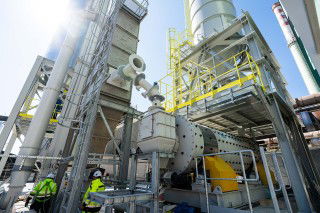There are many reasons for European construction companies to be enjoying strong order books at present. Analysts at Bernstein report that most building material companies saw strong revenue growth in 1H18, particularly in the 2Q18 following the harsh winter that impacted 1Q18 results. However, the sector has seen backwards trading since the start of the year.
The European construction sector has been performing well, driven by a resurgence in infrastructure spending and improved confidence in housing development. In recent years since the financial crisis, Europe saw a delay in the recovery of the construction market mainly because of austerity measures and depressed housing markets, but now the sector has increased momentum.
However, there are noticeable differences between the development of residential and non-residential buildings, which accounts for 77 per cent of the total construction market in the EU-28, and the development of civil engineering works (railways, roads, bridges, airports, dams, etc), which account for around 23 per cent of total construction. The effects of the financial crisis were far less marked for infrastructure than for buildings construction.
Eurostat maintains that since spring 2013, the index of construction production in the EU-28 has increased relatively steadily and now almost reaches 90 per cent of the former peak level. This has led to some concern that the construction market is again reaching the end of its current cycle. However, Bernstein points to a healthy construction cycle extending for another 3-4 years as it is "nowhere near the excesses seen at the top of the previous cycles, unless they are upset by high interest rates and an economic downturn."
Cement companies see growth return to core markets
Cement companies are among those seeing growth return to Europe's core markets at present. HeidelbergCement showed very strong market fundamentals in southern and eastern Europe in 2Q18. In Poland growth rates were up by 20 per cent and in Spain by 18 per cent. Only in the UK and Russia did the markets contract, by one and four per cent, respectively.
Cement demand growth in western Europe is estimated by Bernstein to be up by three per cent in 2018 and by four per cent in 2019. By comparison, Bernstein’s forecasts also reveals that emerging markets for cement, excluding China, will see estimated growth rates of five per cent YoY from 2019 through to 2022.
Cement producers are now pushing through stronger pricing levels in Europe. The 1Q18 was hindered by delays in passing on energy costs and labour cost inflation as well as production slowdowns as the harsh weather impacted on demand. However, margins improved in 2Q18 and companies have been able to increase prices to lessen the impact of energy cost rises.
CEO of HeidelbergCement, Bernd Scheifele, drew attention to this in HeidelbergCement's 2Q conference call, "On energy, that’s a clear issue for energy intense industry. These significant price increases in energy are a problem. It typically takes the industry a certain while to recover that via price increases in our markets."
Meanwhile, LafargeHolcim has had a new management team in place since January to shore up the underperforming business by improving cash conversion and reduce overheads. However, these benefits may only become visible at the end of the year.
LafargeHolcim is still confident of reaching its full-year targets and sees the European operations contributing strongly to its recovery. In Europe LafargeHolcim stated in its 1H18 results that: "Top line and profit grew throughouth the first half of 2018. Strong market trends in most European countries led to improving volumes in all segments compared to the first half of 2017 on a like-for-like basis, with strong momentum in the second quarter."
